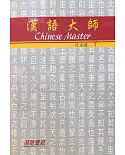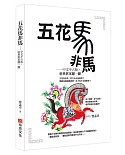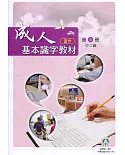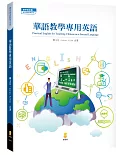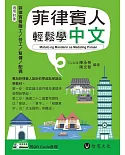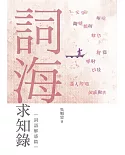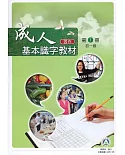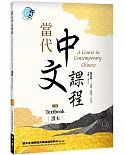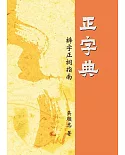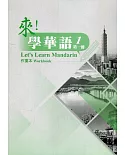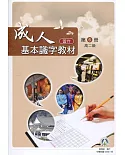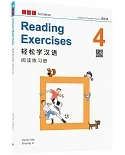序
師範大學國語教學中心成立於 1956 年,是臺灣歷史最悠久、規模最完備、教學最有成效的華語文教學機構。每年培育三千名以上的外籍學生,學生來自世界一百二十餘國,至今累計人數已達五萬餘人,在國際間享譽盛名。
本中心自 1967 年開始編製教材,迄今共計編寫五十餘本教材,在華語教學界具有舉足輕重之地位。而現今使用之主教材已有十五年之久,不少學生及教師認為現行教材內容需要更新,應新編配合時代需求的新教材。因此,本中心因應外在環境變遷、教學法及教學媒體的創新與進步,籌畫編寫《當代中文課程》6 冊,以符合海內外華語教學的需求,並強化臺灣華語文教學教材之品牌。
為了讓理論與實務結合,並落實發揚華語文教學的精神與理念,本中心邀請了華語教學界的大師—鄧守信教授擔任主編,率領 18 位極富教學經驗的第一線老師進行內容編寫,並由張莉萍副研究員、張黛琪老師及教材研發組成員蔡如珮、張雯雯擔任執行編輯,進行了這項《當代中文課程》的編寫計畫。
這是本中心歷經數十年深厚教學經驗後再次開發的全新主教材,更為了確保品質,特別慎重;我們很榮幸地邀請到美國的Claudia
Ross教授、白建華教授及陳雅芬教授,擔任顧問,也邀請了臺灣的葉德明教授、美國的姚道中教授及大陸的劉珣教授,擔任審查委員,並由本校英語系李櫻教授和畢永峨教授分別協助生詞和語法的翻譯。此教材在本中心及臺灣其他語言中心,進行了一年多的試用;經過顧問的悉心指導、審查委員的仔細批閱,並參考了老師及學生提出的寶貴意見,再由編寫老師做了多次修改,才將版本定稿。對於所有在編寫過程中,努力不懈的編輯團隊、給予指教的教授、配合試用的老師及學生,我們都要致上最高的謝意。
在此也特別感謝聯經出版事業股份有限公司,願意投注最大的心力,以專業的製作出版能力,協助我們將這套教材以最佳品質問世。
我們希望,《當代中文課程》不只提供學生們一套實用有效的教材,亦讓老師得到愉快充實的教學經驗。歡迎老師在使用後,給予我們更多的指教與建議,讓我們不斷進步,也才能為海內外的華語教學,做更多更好的貢獻。
國立臺灣師範大學國語教學中心主任 陳浩然
Foreword
The Mandarin Training Center (MTC) at National Taiwan Normal University (NTNU) was established in 1956, and is the oldest, most comprehensive, and most pedagogically effective educational
institute of its kind in Taiwan. Every year over 3,000 international students are trained at MTC, and to the present day over 50,000 students representing more than 120 countries have walked
through its doors, solidifying international renown.
MTC started producing teaching material in 1967, and has since completed over 50 textbooks, making it a frontrunner in the field of teaching Chinese as a second language. As the core books
have been in circulation for 15 years already, many students and teachers agree that updates are in order, and that new materials should be made to meet the modern demand. Changes in the social
landscape, improved teaching methods, and innovations in educational media are what prompted the production of MTC’s six-volume series, A Course in Contemporary Chinese. The project responds to
Chinese teaching needs both at home and abroad, and bolsters Taiwan’s brand of teaching material for Chinese as a second language.
With the goal of integrating theory and practice, and carrying forward the spirit of teaching Chinese as a second language, MTC petitioned one of the field’s most esteemed professors,
Shou-Hsin Teng, to serve as chief editor. A Course in Contemporary Chinese has been compiled and edited under his leadership, together with the help of 18 seasoned Chinese teachers and the
following four executive editors: Associate Research Fellow Liping Chang, Tai-chi Chang, and Ru-pei Cai and Wen-wen Chang of the MTC teaching material development division.
MTC is presenting this brand new core material after half a century’s worth of educational experience, and we have taken extra care to ensure it is of uncompromised quality. We were delighted
to have American professors Claudia Ross, Jianhua Bai , and Yea-fen Chen act as consultants, Professor Teh-Ming Yeh from Taiwan, Professor Tao-chung Yao from the U.S., and Professor Xun Liu
from China on the review committee, and professors Ying Cherry Li and Yung-O Biq of NTNU’s English department help with the respective translation of vocabulary and grammar points. The material
was first trialed at MTC and other language centers around Taiwan for a year. The current version underwent numerous drafts, and materialized under the careful guidance of the consultants, a
sedulous reading from the review committee, and feedback from teachers and students. As for the editorial process, we owe the greatest thanks to the indefatigable editorial team, the professors
and their invaluable input, and the teachers and students who were willing to trial the book.
An additional and special thanks is due to Linking Publishing Company, who put forth utmost effort and professionalism in publishing this set of teaching material, allowing us to deliver a
publication of superior quality.
It is our hope that A Course in Contemporary Chinese is not merely a practical set of teaching materials for students, but also enriching for teachers and the entire teaching experience. We
welcome comments from instructors who have put the books into practice so that we can continue improving the material. Only then can we keep furthering our contribution to the field of teaching
Chinese as a second language, both in Taiwan and abroad.
Hao Jan Chen
Director of the Mandarin Training Center
National Taiwan Normal University
主編的話
From the Editor's Desk
Finally, after more than two years, volume one of our six-volume project is seeing the light of day. The language used in A Course in Contemporary Chinese is up to date, and though there
persists a deep ‘generation gap’ between it and my own brand of Chinese, this is as it should be. In addition to myself, our project team has consisted of 18 veteran MTC teachers and the entire
staff of the MTC Section of Instructional Materials, plus the MTC Deputy Director.
The field of L2 Chinese in Taiwan seems to have adopted the world-famous 'one child policy'. The complete set of currently used textbooks was born a generation ago, and until now has been
without predecessor. We are happy to fill this vacancy, and with the title ‘number two’, yet we also aspire to have it be number two in name alone. After a generation, we present a slightly
disciplined contemporary language as observed in Taiwan, we employ Hanyu Pinyin without having to justify it cautiously and timidly, we are proud to present a brand-new system of Chinese parts
of speech that will hopefully eliminate many instances of error, we have devised two kinds of exercises in our series, one basically structural and the other entirely task-based, each serving
its own intended function, and finally we have included in each lesson a special aspect of Chinese culture. Moreover, all this is done in full color, the first time ever in the field of L2
Chinese in Taiwan. The settings for our current series is in Taipei, Taiwan, with events taking place near the National Taiwan Normal University. The six volumes progress from basic colloquial
to semi-formal and finally to authentic conversations or narratives. The glossary in vocabulary and grammar is in basically semi-literal English, not free translation, as we wish to guide the
readers/learners along the Chinese 'ways of thinking', but rest assured that no pidgin English has been used.
I am a functional, not structural, linguist, and users of our new textbooks will find our approaches and explanations more down to earth. Both teachers and learners will find that the content
resonates with their own experiences and feelings. Rote learning plays but a tiny part of our learning experiences. In a functional frame, the role of the speaker is often seen as prominent.
This is natural, as numerous adverbs in Chinese, as they are traditionally referred to, do not in fact modify verb phrases at all. They relate to the speaker.
We, the field of Chinese as a second language, know a lot about how to teach, especially when it comes to Chinese characters. Most L2 Chinese teachers world-wide are ethnically Chinese, and
teach characters just as they were taught in childhood. Truth is, we know next to nothing how adult students/learners actually learn characters, and other elements of the Chinese language.
While we have nothing new in this series of textbooks that contributes to the teaching of Chinese characters, I tried to tightly integrate teaching and learning through our presentation of
vocabulary items and grammatical structures. Underneath such methodologies is my personal conviction, and at times both instructors' and learners' patience is requested. I welcome communication
with all users of our new textbooks, whether instructors or students/learners.
Shou-hsinTeng

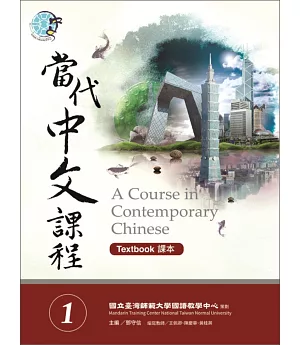













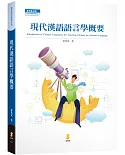
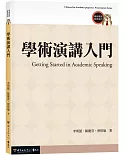
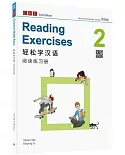
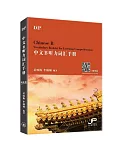
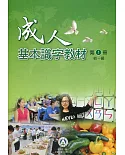
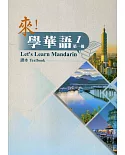
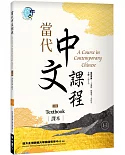
![狀元字音字形全攻略:高手過招60回[新修版]](https://www.books.com.tw/image/getImage?i=https%3A%2F%2Fwww.books.com.tw%2Fimg%2F001%2F088%2F41%2F0010884199.jpg&width=125&height=155)
